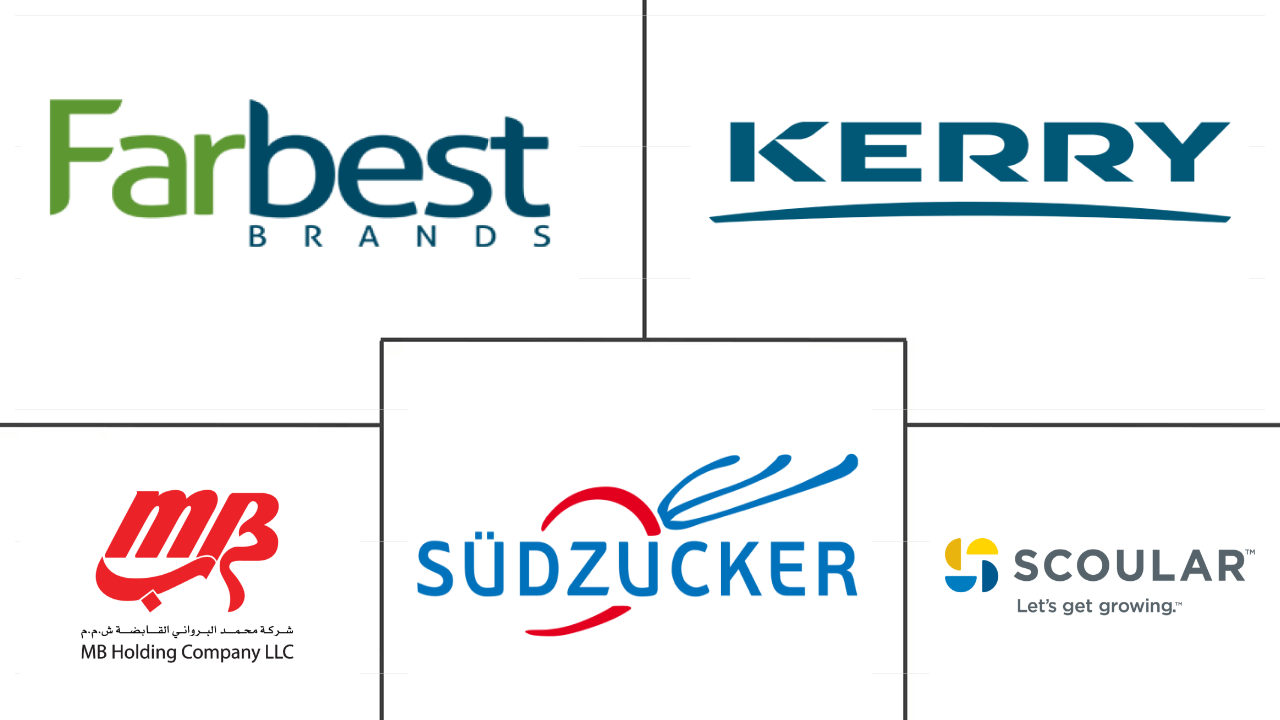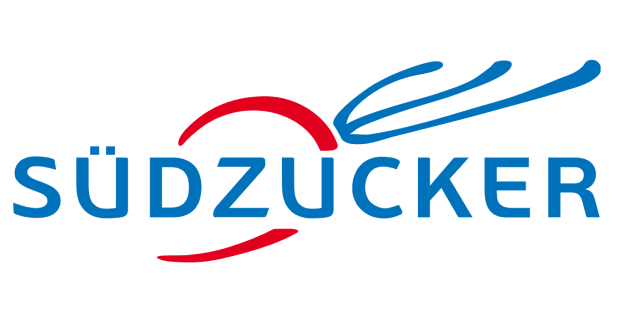Market Size of united states rice protein Industry
|
|
Study Period | 2017 - 2029 |
|
|
Market Size (2024) | USD 203.6 Million |
|
|
Market Size (2029) | USD 246.5 Million |
|
|
Largest Share by End User | Food and Beverages |
|
|
CAGR (2024 - 2029) | 3.90 % |
|
|
Fastest Growing by End User | Personal Care and Cosmetics |
Major Players |
||

|
||
|
*Disclaimer: Major Players sorted in no particular order |
United States Rice Protein Market Analysis
The United States Rice Protein Market size is estimated at 203.6 million USD in 2024, and is expected to reach 246.5 million USD by 2029, growing at a CAGR of 3.90% during the forecast period (2024-2029).
203.6 Million
Market Size in 2024 (USD)
246.5 Million
Market Size in 2029 (USD)
3.99 %
CAGR (2017-2023)
3.90 %
CAGR (2024-2029)
Largest Market by Form
52.31 %
value share, Isolates, 2023
Rice protein isolates hold the largest market share due to the growing demand for rice bran protein isolates that consist of 92% protein, thereby driving the segment's growth.
Largest Market by End User
91.98 %
value share, Food and Beverages, 2023
Rice protein application in the F&B sector is rising as it is an allergen-friendly alternative to soy and animal dairy proteins, mainly as meat alternatives and in beverages.
Fastest Growing Market by Form
5.10 %
Projected CAGR, Textured/Hydrolyzed, 2024-2029
The rising demand for hydrolyzed rice protein for its application in skin and hair care products, aided by its ability to bind moisture, is fostering the segment's growth.
Fastest Growing Market by End User
6.31 %
Projected CAGR, Personal Care and Cosmetics, 2024-2029
Because it improves skin elasticity and maintains hair and nail health, the use of rice protein in personal care and cosmetic products has grown at the fastest rate.
Leading Market Player
37.99 %
market share, Südzucker Group, 2021

Suedzucker AG is the market leader in the country due to its exceptional supplying facility of rice proteins as well as the limited number of competitors in the market.
Growing lactose-intolerant population in the country and increasing protein consumption need is driving the use of rice protein
- Rice proteins witnessed maximum demand in the food and beverage segment, majorly led by meat/poultry/seafood and meat alternative products. In 2022, the sub-segment claimed more than 83% of rice proteins consumed in the country. Rice protein satiates multiple consumer demands, such as vegan, gluten-free, and high-protein food products. Rice proteins were used as meat extenders at different concentration levels (3%, 6%, 9%, and 12%) for the development of chicken nuggets. The segment for baking supplies and baking mixes may have extremely high demand as a result of the protein trend, which is only expected to intensify. To meet the growing demand for vegan bakery products, food producers are using rice protein to create protein-rich bakery items.
- The ingredient is gaining popularity for being hypoallergenic and a nutritious alternative for people dealing with lactose intolerance. The number of lactose-intolerant people in the country is around 30 million, leading to high demand for alternative proteins, including rice protein. Especially rice-based formulas have been used as a better alternative than soy milk for children with cow's milk allergy, as the human digestibility of polished rice protein is as high as 86-90%.
- In terms of growth, the personal care and cosmetics segment is set to outpace major categories in terms of growth, with a projected CAGR of 6.18% by value during the forecast period. This growth can be attributed to the rising demand for synthetic ingredients in beauty products. Consumers are increasingly embracing plant-based substitutes such as rice proteins, thus leading to market expansion.
United States Rice Protein Industry Segmentation
Concentrates, Isolates, Textured/Hydrolyzed are covered as segments by Form. Food and Beverages, Personal Care and Cosmetics, Supplements are covered as segments by End User.
- Rice proteins witnessed maximum demand in the food and beverage segment, majorly led by meat/poultry/seafood and meat alternative products. In 2022, the sub-segment claimed more than 83% of rice proteins consumed in the country. Rice protein satiates multiple consumer demands, such as vegan, gluten-free, and high-protein food products. Rice proteins were used as meat extenders at different concentration levels (3%, 6%, 9%, and 12%) for the development of chicken nuggets. The segment for baking supplies and baking mixes may have extremely high demand as a result of the protein trend, which is only expected to intensify. To meet the growing demand for vegan bakery products, food producers are using rice protein to create protein-rich bakery items.
- The ingredient is gaining popularity for being hypoallergenic and a nutritious alternative for people dealing with lactose intolerance. The number of lactose-intolerant people in the country is around 30 million, leading to high demand for alternative proteins, including rice protein. Especially rice-based formulas have been used as a better alternative than soy milk for children with cow's milk allergy, as the human digestibility of polished rice protein is as high as 86-90%.
- In terms of growth, the personal care and cosmetics segment is set to outpace major categories in terms of growth, with a projected CAGR of 6.18% by value during the forecast period. This growth can be attributed to the rising demand for synthetic ingredients in beauty products. Consumers are increasingly embracing plant-based substitutes such as rice proteins, thus leading to market expansion.
| Form | |
| Concentrates | |
| Isolates | |
| Textured/Hydrolyzed |
| End User | ||||||||
| ||||||||
| Personal Care and Cosmetics | ||||||||
|
United States Rice Protein Market Size Summary
The United States rice protein market is experiencing a steady expansion, driven by increasing consumer demand for vegan, gluten-free, and high-protein food products. Rice protein is predominantly utilized in the food and beverage sector, particularly in meat, poultry, seafood, and meat alternative products, which account for a significant portion of its consumption. The ingredient's appeal is further enhanced by its hypoallergenic properties and suitability for individuals with lactose intolerance, making it a preferred choice for those seeking alternatives to dairy and soy products. The market is also witnessing a growing interest in rice protein for baking supplies and mixes, as food producers aim to meet the rising demand for protein-rich vegan bakery items. Additionally, the personal care and cosmetics segment is projected to see substantial growth, fueled by the increasing preference for plant-based substitutes in beauty products.
The United States is a key player in the global rice market, producing a significant portion of long- and medium-grain rice, with regions like Arkansas and California leading in production. Despite accounting for a small percentage of global rice production, the U.S. is a major exporter, supplying a notable share of the global market. The rice protein market is moderately consolidated, with major companies like Farbest-Tallman Foods Corporation, Kerry Group PLC, and others dominating the landscape. These companies are actively expanding their product offerings through strategic acquisitions and developments, such as Kerry Group's expansion of plant protein ingredients and BENEO's acquisition of Meatless BV. This strategic growth is indicative of the increasing integration of rice protein in various applications, ranging from food and beverages to personal care products, reflecting the broader trend towards plant-based and sustainable alternatives in the United States.
United States Rice Protein Market Size - Table of Contents
-
1. MARKET SEGMENTATION (includes market size in Value in USD and Volume, Forecasts up to 2029 and analysis of growth prospects)
-
1.1 Form
-
1.1.1 Concentrates
-
1.1.2 Isolates
-
1.1.3 Textured/Hydrolyzed
-
-
1.2 End User
-
1.2.1 Food and Beverages
-
1.2.1.1 By Sub End User
-
1.2.1.1.1 Bakery
-
1.2.1.1.2 Beverages
-
1.2.1.1.3 Meat/Poultry/Seafood and Meat Alternative Products
-
1.2.1.1.4 Snacks
-
-
-
1.2.2 Personal Care and Cosmetics
-
1.2.3 Supplements
-
1.2.3.1 By Sub End User
-
1.2.3.1.1 Elderly Nutrition and Medical Nutrition
-
1.2.3.1.2 Sport/Performance Nutrition
-
-
-
-
United States Rice Protein Market Size FAQs
How big is the United States Rice Protein Market?
The United States Rice Protein Market size is expected to reach USD 203.56 million in 2024 and grow at a CAGR of 3.90% to reach USD 246.51 million by 2029.
What is the current United States Rice Protein Market size?
In 2024, the United States Rice Protein Market size is expected to reach USD 203.56 million.

